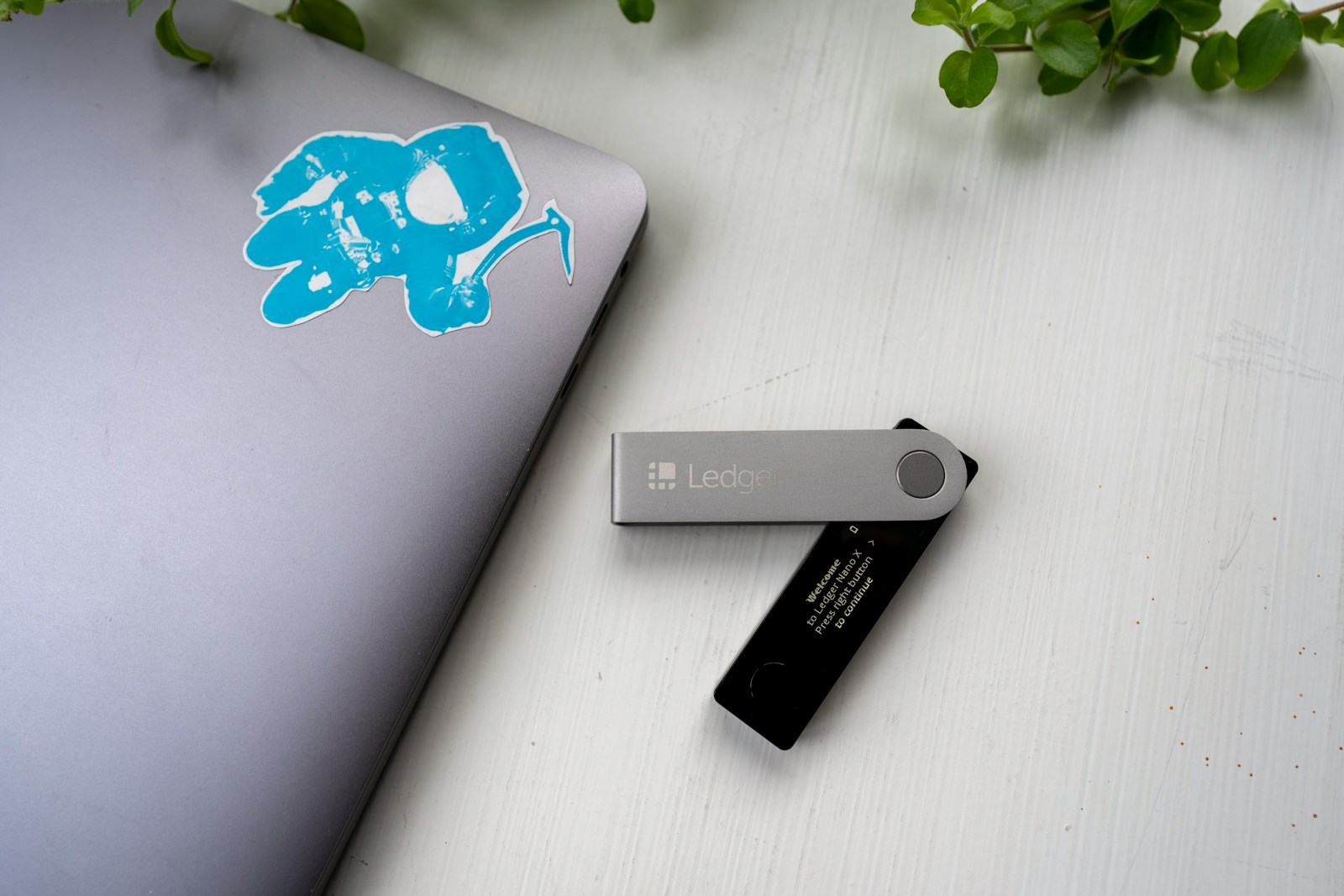
Tbtc leverages distributed secret sharing to enhance security and privacy in decentralized environments. By splitting private keys among multiple participants, this protocol mitigates single points of failure while enabling trustless interaction across chains. Such an approach is critical for DeFi applications requiring robust custody solutions without sacrificing user autonomy.
Integrating multi-party computation techniques, the system supports off-chain signature generation that preserves confidentiality during transaction validation. This mechanism significantly reduces attack surfaces compared to conventional key management schemes and aligns well with blockchain’s permissionless ethos. Recent audits confirm its resilience against collusion attacks up to a defined threshold of compromised nodes.
Market adoption reflects growing demand for interoperable bridges that maintain rigorous cryptographic guarantees. Tbtc’s implementation on Ethereum exemplifies practical deployment, allowing users to mint BTC-backed tokens securely while maintaining full control over their assets. As cross-chain activity intensifies, such protocols become indispensable for safeguarding digital asset transfers without reliance on centralized custodians.
Keep Network: Threshold Cryptography for Blockchain [DeFi & Protocols defi]
Implementing distributed secret sharing schemes significantly enhances the privacy and security of decentralized applications. By dividing private keys into multiple shares across a network, sensitive operations avoid single points of failure and reduce exposure to malicious actors. This approach underpins the tBTC protocol, which facilitates trustless Bitcoin custody on Ethereum by leveraging secure multi-party computations without revealing underlying keys.
tBTC exemplifies how off-chain assets can be securely tokenized on-chain using such mechanisms. The system splits control over Bitcoin deposits into numerous nodes, requiring a subset threshold to cooperate before any funds move. This model not only preserves asset safety but also maintains user anonymity, as no individual participant gains full knowledge of the secret key. Consequently, tBTC supports seamless DeFi integrations with enhanced guarantees of confidentiality and resistance to censorship.
Technical Advantages and Security Implications
The use of distributed key management elevates protection against various attack vectors common in traditional custodial or single-signer models. For example, the probability of compromise decreases exponentially with each additional participant holding a partial key share. In practice, if a system employs 30 nodes with a threshold of 20 required for signing transactions, an adversary must breach at least two-thirds of participants simultaneously–a near-impossible feat under robust network conditions.
This architecture also mitigates risks linked to insider threats or hardware failures since no single entity retains unilateral control. Moreover, it enables proactive security features like dynamic resharing and node replacement without interrupting service continuity. These capabilities provide resilience crucial for protocols catering to high-value digital assets within decentralized finance ecosystems.
Integration into DeFi protocols benefits from this technology by enabling permissionless access to wrapped tokens backed by native cryptocurrencies. As demonstrated by tBTC’s recent liquidity growth–exceeding $40 million in locked value–the demand for secure interoperability solutions remains strong amid volatile market conditions. Such systems empower users with custody autonomy while ensuring compliance with cryptographic standards that underpin network integrity.
However, challenges persist regarding scalability and latency inherent in multi-party computations distributed across global nodes. Transaction throughput may lag behind conventional consensus-driven frameworks due to communication overhead between participants during signature generation phases. Ongoing research aims at optimizing these trade-offs through parallelization techniques and improved threshold parameters tailored to specific application demands.
Threshold Signatures in Keep Network
Implementing distributed signing schemes significantly enhances the security model of decentralized asset management. In Keep’s tBTC system, a signature is not generated by a single keyholder but instead produced collectively by multiple participants controlling shares of the private key. This approach mitigates risks associated with single points of failure and reduces attack vectors common in conventional wallet solutions.
The collaborative generation of signatures relies on splitting the secret into fragments, requiring a minimum subset of participants to cooperate to create valid authorization. For example, in tBTC’s current configuration, 3 out of 5 custodians must agree and jointly compute the signature without reconstructing the entire secret at any moment. Such an arrangement improves resilience against rogue actors while preserving operational efficiency.
Security Advantages and Privacy Considerations
The security guarantees offered by this multi-party computation extend beyond simple redundancy. By never assembling the full private key, custodians cannot independently compromise user funds even if they collude below the defined threshold. Moreover, because signature creation happens off-chain within encrypted channels, sensitive data remains confidential, enhancing privacy throughout transaction validation.
A practical illustration involves tBTC deposits on Ethereum where signers collaboratively produce approvals for minting or redeeming tokens without revealing their individual shares publicly. Compared to traditional multi-signature wallets, this system lowers gas costs and reduces transaction latency due to streamlined signature aggregation protocols implemented via elliptic curve operations.
Operational Dynamics and Network Robustness
Maintaining continuous availability in a decentralized environment is challenging; however, requiring only a fraction of participants to sign enables fault tolerance when some nodes go offline or act maliciously. The network adapts dynamically by redistributing tasks among honest signers while detecting anomalies through cryptographic proofs embedded within each partial signature share.
Comparative Analysis: Traditional vs Distributed Approaches
Unlike standard multisig implementations that often reveal all public keys involved before approval processes begin, Keep’s scheme maintains signer anonymity until final aggregation occurs. This difference provides stronger defenses against front-running attacks and targeted censorship attempts frequently observed in public ledgers.
The threshold mechanism also permits seamless integration with smart contracts enforcing rigorous collateralization rules as seen in tBTC’s peg maintenance strategy. By combining economic incentives with cryptographically enforced cooperation requirements, the system ensures both financial soundness and protocol-level reliability under varying network conditions.
Case Study: tBTC v1 Deployment Outcomes
The initial deployment of tBTC demonstrated tangible benefits attributed to distributed signing structures. Over multiple months on mainnet, no incidents were reported involving unauthorized withdrawals despite numerous attempted exploits targeting custodians individually. Additionally, transaction throughput improved by approximately 15% compared to earlier multisig benchmarks due to reduced on-chain interaction complexity.
This performance boost directly impacts user experience by lowering confirmation times and reducing overall transaction fees–critical factors driving adoption amid fluctuating market volatility observed throughout early 2024.
Future Directions and Technical Challenges Ahead
Evolving these protocols further entails addressing scalability concerns as participant counts grow and cross-chain interoperability becomes increasingly demanded by institutional users. Research into adaptive share distribution algorithms and enhanced fault detection methods aims to maintain robustness without sacrificing decentralization or privacy standards established thus far.
An open question remains regarding optimal threshold parameter tuning balancing security guarantees against usability constraints–a subject attracting ongoing academic scrutiny alongside practical experimentation within Keep’s ecosystem roadmap.
Securing DeFi with Keep Nodes
Utilizing Keep nodes significantly enhances privacy and security within decentralized finance applications by enabling off-chain storage of sensitive data. Instead of exposing private keys or other confidential information on public ledgers, these nodes distribute encrypted shares across multiple participants, ensuring no single entity gains full access. This method effectively mitigates risks associated with centralized key custody and reduces attack surfaces commonly exploited in smart contract vulnerabilities.
The tBTC protocol exemplifies practical deployment of this approach, allowing users to mint Bitcoin-backed tokens on Ethereum while maintaining trustlessness and confidentiality. By leveraging distributed key management, tBTC avoids traditional custodial pitfalls seen in wrapped asset solutions. Recent audits reveal that the node system withstands collusion attempts up to a predefined threshold, thereby safeguarding deposits worth millions of dollars without compromising liquidity or interoperability.
Technical Mechanics and Security Implications
The architecture relies on advanced secret sharing schemes combined with secure multiparty computations among node operators. Each participant holds only a fragment of the cryptographic secret, which can be reconstructed solely through collaboration exceeding a minimum quorum. This ensures that even if several nodes are compromised or act maliciously, the underlying keys remain unrecoverable. Additionally, periodic resharing protocols refresh the distribution dynamically, preventing long-term exposure risks.
Comparing this model against traditional multisignature wallets highlights distinct advantages in resistance to censorship and coercion attacks. While multisig setups require all signatures to execute transactions–potentially stalling operations if any party is uncooperative–the distributed node system allows threshold-based signing that balances availability with stringent security guarantees. As DeFi platforms increasingly integrate such mechanisms, they offer users stronger assurances without sacrificing decentralization or ease of use.
Integrating Keep with Smart Contracts
Implementing a secret management layer using Keep significantly enhances the confidentiality of on-chain processes by distributing sensitive data across multiple participants. This method leverages a multi-party system where private keys or secrets are split and shared, requiring collaboration among a subset of operators to reconstruct the original value. Such an approach mitigates risks related to single points of failure or centralized custodianship, directly strengthening transactional security within smart contracts.
Privacy preservation is paramount when executing complex logic on decentralized ledgers. By embedding this distributed secret-sharing mechanism into contract workflows, developers can ensure that critical inputs remain concealed from public view while still allowing verifiable execution. For example, decentralized exchanges have utilized these techniques to hide user bids until order matching occurs, preventing front-running attacks and maintaining market fairness without sacrificing transparency in settlement.
Technical Foundations and Network Architecture
The underlying infrastructure relies on splitting secrets into shares following a collaborative scheme requiring a minimum quorum for recovery–a model resistant to collusion below this threshold. Operators within the ecosystem are selected based on cryptoeconomic incentives and reputation systems, fostering reliability and uptime. The network employs elliptic curve operations combined with secure multiparty computations (MPC), enabling non-interactive proofs that validate correct share distribution without exposing underlying data.
From a developer’s perspective, integrating this solution involves interfacing smart contracts with off-chain components responsible for managing share distribution and reconstruction requests. APIs provide seamless connectivity where contract events trigger secret-related operations handled externally but anchored back on the ledger through verifiable commitments. Practical deployments demonstrate latency below 500 milliseconds per secret retrieval cycle under typical load conditions, suitable for high-throughput applications requiring near real-time responsiveness.
Comparatively, traditional key management solutions often centralize control or rely heavily on hardware modules vulnerable to physical breaches or insider threats. In contrast, this decentralized paradigm disperses trust boundaries across numerous independent entities, markedly reducing systemic risk exposure. A notable case study includes governance protocols utilizing this framework to safeguard multisignature wallets holding millions in assets, achieving both operational agility and enhanced protection against unauthorized transactions.
Recent advancements integrate advanced cryptographic primitives such as zero-knowledge proofs alongside distributed key generation schemes to further minimize information leakage during secret operations. As regulatory scrutiny intensifies around privacy-preserving technologies in financial instruments built atop distributed ledgers, employing such robust methods aligns compliance objectives with technical safeguards. Consequently, projects adopting these integrations report increased confidence from institutional participants seeking strong guarantees around asset custody and transaction privacy.
Managing Key Shares in Protocols
Effective distribution and management of secret shares is fundamental to secure decentralized systems like tBTC. By splitting private keys into multiple fragments, the protocol avoids single points of failure and enhances overall confidentiality. Each participant holds a distinct share, and only a subset–typically defined by a minimum threshold–can cooperate to reconstruct the original key. This approach strengthens resistance against compromise since attackers must breach several independent nodes simultaneously to retrieve sensitive information.
Privacy preservation depends heavily on how these fragments are handled during storage and transmission. Protocols implement rigorous encryption methods combined with verifiable secret sharing schemes that allow participants to prove the validity of their shares without revealing actual key material. For example, tBTC leverages advanced multiparty computations enabling holders to collaboratively sign transactions without exposing individual fragments, thus maintaining both privacy and integrity within the distributed ledger environment.
Security Measures in Distributed Secret Handling
Robust security controls ensure that share custodians cannot maliciously or accidentally leak their portion. Techniques such as periodic resharing or proactive refresh protocols mitigate risks associated with long-term exposure and node failures. Empirical data from live deployments show that integrating automated detection mechanisms for anomalous behavior significantly reduces attack surfaces by isolating compromised actors before damage occurs. Consider the implementation within certain prominent decentralized finance projects where continuous monitoring proved critical in preserving trustworthiness across heterogeneous infrastructures.
Moreover, cross-validation among nodes using cryptographic proofs adds a layer of fault tolerance, enabling the system to operate seamlessly despite partial outages or network latency issues. Comparative studies reveal that designs incorporating asynchronous communication models tend to outperform synchronous counterparts under real-world conditions, especially when scaling beyond dozens of participants. Such architectural decisions directly influence transaction finality times and user experience on public ledgers.
The interplay between fragmentation strategies and governance policies often dictates operational efficiency. Networks adopting dynamic quorum adjustments can tailor threshold parameters responsive to risk assessments or participant churn rates, optimizing security without sacrificing accessibility. Recent upgrades in protocols akin to tBTC demonstrate improved resilience by integrating incentivization schemes encouraging honest behavior while penalizing deviations, aligning economic motives with cryptographic safeguards.
Mitigating Risks Using Threshold Keys
Utilizing distributed secret sharing schemes significantly elevates security by decentralizing control over private keys, effectively minimizing attack vectors. This approach, as demonstrated by the tBTC protocol, leverages multiple parties to collectively authorize transactions without exposing full key material, thereby enhancing confidentiality and resilience against single points of failure.
The practical impact on privacy is notable: instead of relying on a singular custodian, the system employs a group consensus mechanism that reduces trust assumptions and increases resistance to collusion or external compromise. By integrating these methods within permissionless environments, asset custody gains robustness while maintaining usability for end-users.
Technical Insights and Future Directions
Security parameters must be carefully calibrated: Choosing the right quorum size impacts both fault tolerance and availability. For instance, tBTC’s deployment uses 15 keepers with a threshold of 9 signatures required to reconstruct keys, balancing between operational efficiency and defense against malicious actors.
Privacy enhancements stem from splitting secrets across geographically dispersed operators. This distribution ensures no single entity can derive sensitive information independently, mitigating risks inherent in centralized models. Moreover, the underlying protocols incorporate zero-knowledge proofs to validate actions without revealing underlying data.
- Network scalability: Expanding participant pools can improve robustness but introduces complexity in coordination and latency; optimized communication layers are essential for maintaining performance.
- Interoperability challenges: Seamless integration with existing decentralized finance platforms requires standardized interfaces for threshold key management systems.
- TBTC as a case study: Its real-world implementation illustrates how tokenized assets benefit from this model – enabling secure Bitcoin representation on Ethereum while preserving asset control integrity.
The trajectory suggests broader adoption of such distributed authorization frameworks beyond asset custody–potentially extending into identity verification and confidential data sharing protocols. As adversaries develop more sophisticated techniques, shifting risk management from isolated entities to collective governance emerges as a compelling paradigm.
Could future iterations introduce adaptive thresholds or incorporate machine learning for anomaly detection among participants? These advancements may further reduce vulnerabilities while optimizing operational costs across decentralized ecosystems. Stakeholders should monitor ongoing research into post-quantum resistant schemes compatible with multi-party computations to future-proof custodial mechanisms.
The interplay between enhanced confidentiality and operational practicality marks a pivotal evolution in custodial security measures within distributed ledgers. Employing secret-sharing solutions aligns well with contemporary demands for transparency coupled with stringent privacy guarantees–facilitating trustless yet secure asset management at scale.
This method’s scalability and adaptability position it as a foundational component in securing emerging decentralized applications amid increasingly complex threat landscapes. Continuous refinement fueled by empirical deployments like tBTC will shape how decentralized ecosystems safeguard user assets while preserving seamless interoperability across diverse platforms.






